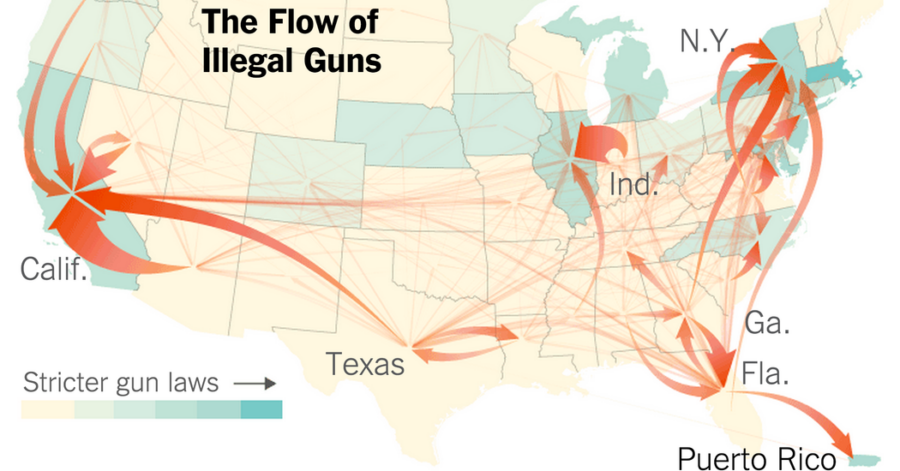
(Image courtesy of the New York Times)
If diverse datasets and geospatial information can help fine-tune global distribution networks, they can also be used to hunt them. In the fight to uphold arms embargoes around the world, the geospatial industry’s proven track record of weaving together disparate data and imagery to form a clear picture provides major assistance.
In 2018, analysis of satellite imagery was able to establish an arms embargo breach in South Sudan. In 2015, before any embargo was in place, Ukraine sold four or more Mi-24 attack helicopters to South Sudan. When an embargo went into place in July 2018, the helicopters were grounded at two different locations – a government security base in Luri and at the Juba International Airport. None were in flyable condition, and any repairs to them would violate the embargo.
Using a total of 308 satellite images, Amnesty International constructed a timeline of the helicopters’ locations since the embargo’s beginning. The analysis showed that, in October and November of 2018, the helicopters had undergone maintenance, and been moved between bases. New rotor blades were one visual clue they used to make this determination.
As discussed in our post about the geospatial industry and illegal fishing, location data from boats at sea is also helpful when searching for unlawful behavior. This applies to ships carrying embargoed weapons, too.
In March 2020, a BBC investigative report used satellite images to show that Turkey sent tanks and weapons to Libya via ship shortly after agreeing to a UN arms embargo. GIS Tracking indicated the ships left Turkey, on their way to Tunisia, but the ships’ transponders were shut off three days after its departure. Satellite images from that day showed the ships off the coast of Libya. When the ship docked at Genoa, Italy, authorities questioned the sailors, and one sailor confessed to being part of the arms trade.
Sometimes confessions of agreement-breaking are not so easy to obtain, though. Fortunately, geospatial data doesn’t lie.
Jeffrey Lewis and Melissa Hanham are experts on North Korea’s nuclear program with the East Asia Nonproliferation Program. The program is located at the Center for Nonproliferation Studies (CNS) at Middlebury’s Institute for International Studies at Monterey.
They used seismic signatures from the ground motion after five of North Korea’s nuclear tests. Combining this data with satellite imagery, they were able to build a three-dimensional map of the test site. Their ability to show the approximate dimensions of the North Korea site indicated that it was being modeled after US test tunnels. Their research utilizing geospatial data uncovered a significant amount of highly confidential information.
Key Takeaways:
- Arms embargoes are often difficult to monitor, which makes them hard to enforce. Thanks to the geospatial industry’s advances in satellite imaging and diverse data analysis, these kinds of situations can be monitored and tracked remotely.
- A creative combination of geospatial data, ship tracking records, and on-the-ground personnel can make a big difference, and stop embargo-breaking before it leads to violence.
- Satellite images can help piece together the movements of otherwise unsupervised equipment, while geospatial information can give analysts ideas about larger infrastructure, like nuclear testing sites.



